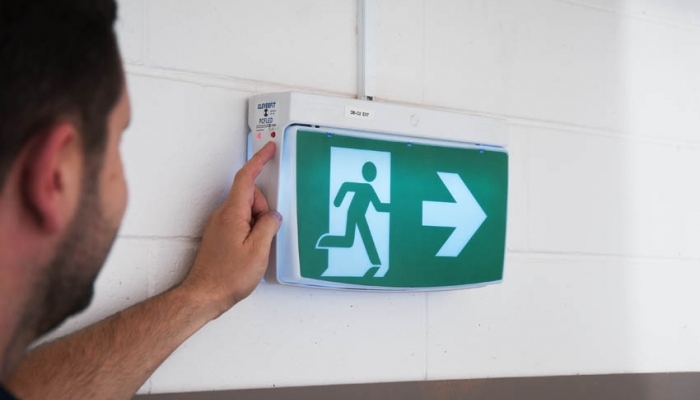
Exit and emergency light testing and installation are essential aspects of maintaining safety compliance in buildings throughout Australia. Here’s an overview of these processes:
Exit and Emergency Lighting Requirements: Australian building codes and standards, such as the Building Code of Australia (BCA) and AS/NZS 2293 series, mandate the installation and maintenance of exit and emergency lighting systems. These regulations ensure that occupants can safely evacuate buildings in the event of an emergency, such as a fire or power outage.
Testing Requirements: Exit and emergency lighting systems must undergo regular testing to ensure their proper functioning. This includes functionality testing, duration testing (to verify that lights stay illuminated for the required duration which is typically 90 minutes),Local council requirements state that Emergency & Exit lighting are required to be certified periodically by conducting a 90 minute battery discharge test on a 6 monthly basis.
Testing Frequency: The frequency of testing varies depending on factors such as the type of building, occupancy classification, and jurisdictional requirements. Typically, exit and emergency lighting systems should be tested at regular intervals, ranging from monthly to annually, with some components requiring more frequent testing.
Qualified Personnel: Testing and maintenance of exit and emergency lighting systems should be performed by qualified personnel, such as licensed electricians or technicians trained in compliance with relevant standards. These professionals have the expertise to conduct thorough inspections, identify issues, and ensure that lighting systems meet regulatory requirements. IESS can test and certify your Exit & Emergency lighting periodically and rectify any issues for compliance.
Installation: Proper installation of exit and emergency lighting systems is crucial for their effectiveness during emergencies. Installations must comply with relevant standards and guidelines, including requirements for placement, illumination levels, and signage.
Documentation: Detailed records of testing, maintenance, and installation activities should be maintained to demonstrate compliance with regulatory requirements. This documentation may include test reports, maintenance logs, certificates of compliance, and records of any repairs or upgrades performed on the lighting systems.
What is an Annual Fire Safety Statement (AFSS)
In Australia, an Annual Fire Safety Statement (AFSS) is a document that certifies that essential fire safety measures within a building are operational and compliant with relevant regulations and standards. The AFSS is typically issued by the building owner or their representative and submitted to the local fire authority or council on an annual basis.
Key aspects of an Annual Fire Safety Statement include:
Website Created by IT Solutions Sydney.
